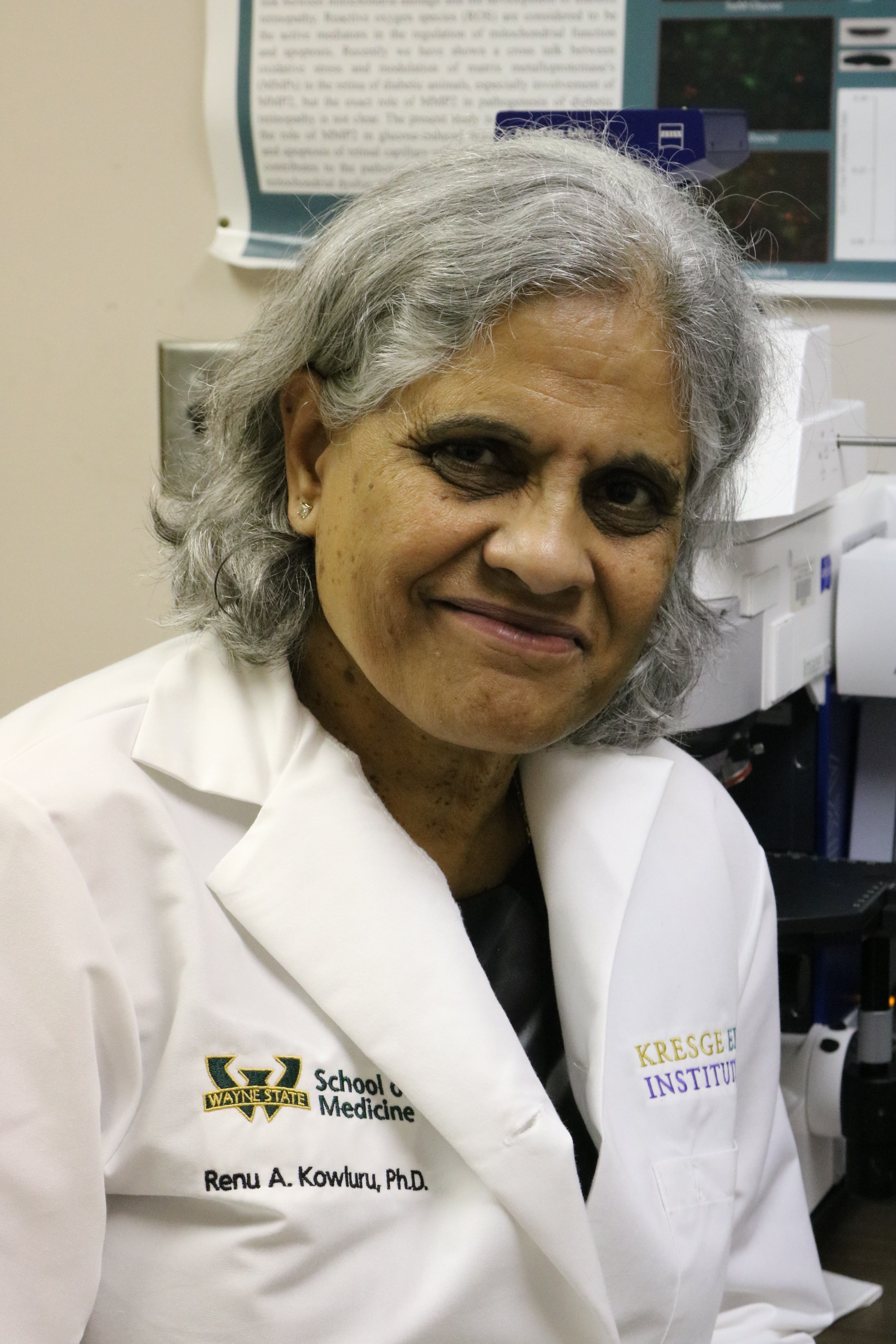Receiving a single R01 grant from the National Institutes of Health funded is impressive. Wayne State University Professor of Ophthalmology, Visual and Anatomical Sciences Renu Kowluru, Ph.D., is the principal investigator for three, all of which target new therapies for diabetic retinopathy, the leading cause of blindness in working-age adults.

All are renewable from the NIH’s National Eye Institute. The most recent – “Role of H-Ras in retinal cell death in diabetes” -- renewed for a third time April 1. Funding runs through March 2024.
Despite its commonality, the molecular mechanisms of diabetic retinopathy are still unclear.
“Our proposed studies are innovative and carry a significant translational impact as they are expected to identify novel therapeutic targets to prevent the development and progression of diabetic retinopathy. This will offer patients additional therapeutic means to prevent or halt this sight-threatening complication of diabetes,” Dr. Kowluru said.
The other funded projects, “Glycemic Control and Progression of Diabetic Retinopathy” and “NADPH Oxidase, Mitochondrial Dysfunction and Diabetic Retinopathy,” renewed last year.
“Our ongoing studies have documented a critical role of matrix metalloproteinase 9 (MMP-9) in diabetic retinopathy, and have demonstrated that cytosolic MMP-9 accumulates in the mitochondria, damaging their membrane and DNA. We have shown that epigenetic modifications play a major role in the activation of MMP-9. In diabetes, homocysteine, a thiol-containing non-protein amino acid, is also elevated, and the levels of its precursor, hydrogen sulfide, are reduced,” Dr. Kowluru said.
The new project aims to identify the molecular mechanism by which increased homocysteine in diabetes activates retinal MMP-9 and damages mitochondria.
“We plan to target homocysteine-hydrogen sulfide metabolic balance, which should prevent MMP-9 activation and also protect mitochondrial dynamics by inhibiting fragmentation,” she added. “Our hope is that the maintenance of metabolic balance between homocysteine and hydrogen sulfide will prevent MMP-9 activation and mitochondrial damage, and will inhibit the development of diabetic retinopathy.”
Dr. Kowluru is director of Translational Research in her department. Her lab published 44 papers during the previous funding period, including 17 directly related to the role of MMP-9 in diabetic retinopathy.
“I am very passionate about each of my projects, and feel lucky that the study section also liked our science and renewed these without any revision,” she said. “They expressed a high degree of enthusiasm for our proposed studies, and viewed the project as very innovative, built on a strong and well-supported scientific premise, and highly significant. The project was also commended for its significant transitional impact.”
NEI has funded grants No. EY014370, 017313 and 022230.